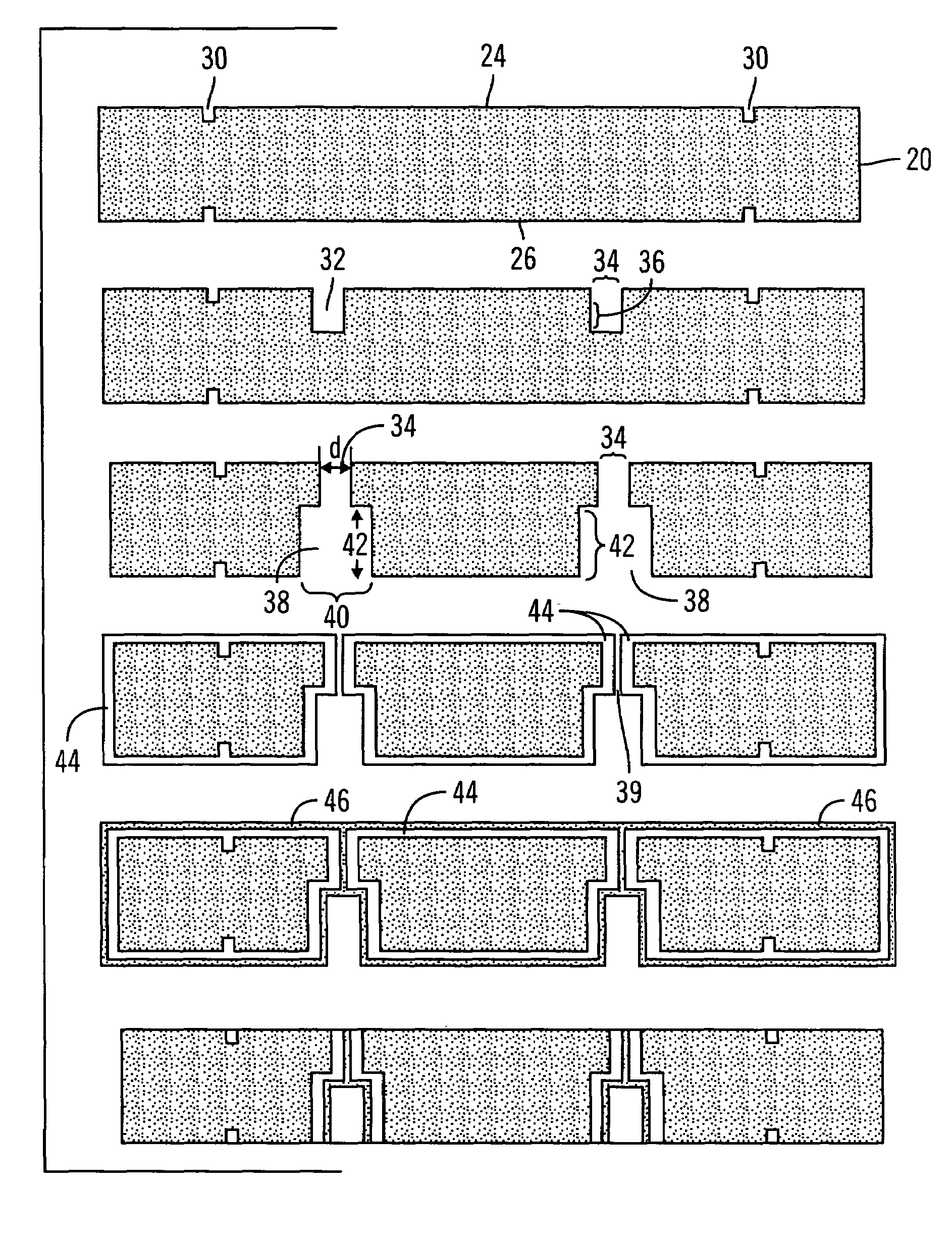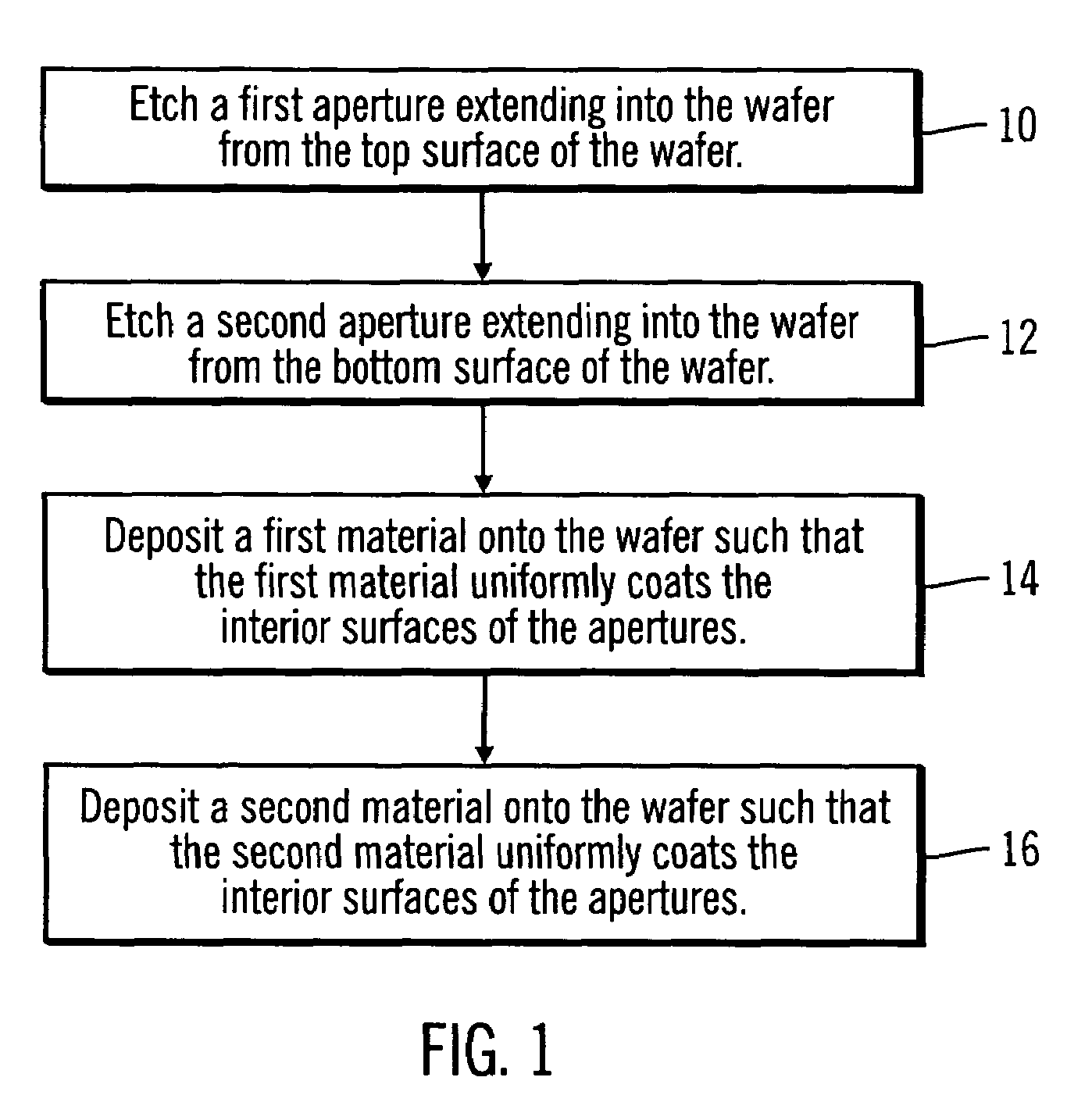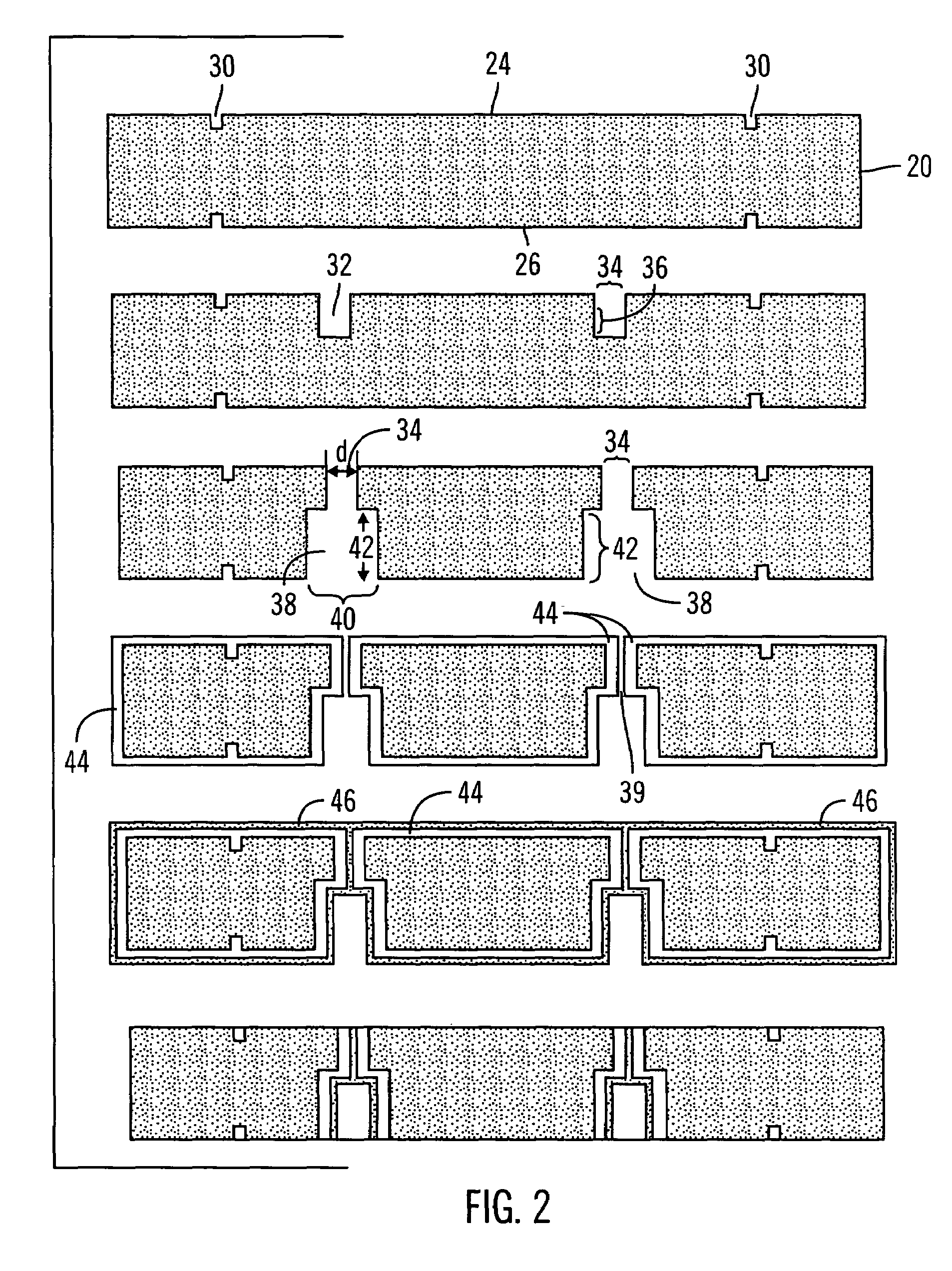Low temperature method for fabricating high-aspect ratio vias and devices fabricated by said method
a technology of throughwafer vias and low temperature, applied in the direction of semiconductor devices, semiconductor/solid-state device details, electrical apparatus, etc., can solve the problems of limited implementation of multi-technology circuits such as si cmos and sige, limited the implementation of integrated device circuits, and low-temperature methods. achieve the effect of enhancing chip performance, increasing the density of vias, and increasing circuitry
- Summary
- Abstract
- Description
- Claims
- Application Information
AI Technical Summary
Benefits of technology
Problems solved by technology
Method used
Image
Examples
Embodiment Construction
[0022]Embodiments of the present invention are directed to a process for fabricating high aspect ratio through-wafer vias at low temperatures. The fabrication process produces high performance silicon chips or CMOS assemblies having high density via interconnects.
[0023]With reference to FIG. 1, in preferred embodiments, to form a via, a first cavity is etched into the first surface of a wafer 10. After the first cavity is formed, a second cavity is etched into the second surface of the wafer 12. Once the first and second cavities are formed, a first material is deposited onto the wafer such that it uniformly coats the wafer 14, including uniformly coating the interior walls of the cavities. Finally, a second material is deposited onto the wafer such that the second material uniformly coats the wafer 16, including the interior walls of the cavity.
[0024]With reference to FIG. 2, the wafer 20, also referred to as a substrate, comprises a first surface 24, a second surface 26 and a dept...
PUM
| Property | Measurement | Unit |
|---|---|---|
| temperature | aaaaa | aaaaa |
| temperature | aaaaa | aaaaa |
| depth | aaaaa | aaaaa |
Abstract
Description
Claims
Application Information
 Login to View More
Login to View More - R&D
- Intellectual Property
- Life Sciences
- Materials
- Tech Scout
- Unparalleled Data Quality
- Higher Quality Content
- 60% Fewer Hallucinations
Browse by: Latest US Patents, China's latest patents, Technical Efficacy Thesaurus, Application Domain, Technology Topic, Popular Technical Reports.
© 2025 PatSnap. All rights reserved.Legal|Privacy policy|Modern Slavery Act Transparency Statement|Sitemap|About US| Contact US: help@patsnap.com



